COLLEGE NEWS
COLLEGE NEWS
The Important Achievements in the Research of Laser-induced Breakdown Spectroscopy
2023-11-16 浏览次数:12
Laser-induced Breakdown Spectroscopy (LIBS) is an emerging technology for detecting elemental composition, which has the advantages of rapid real-time analysis, no sample pretreatment, convenient operation, and simultaneous detection of all elements. It has been applied in fields such as metallurgy, energy, environmental monitoring, advanced manufacturing, biomedicine, space exploration, and others. LIBS systems have been integrated in Zhurong Mars rover(MarSCoDe)of China and Perseverance (SuperCam) Mars rover of U.S. Recently, the research team of Prof. Rongsheng Lu has made important achievements in LIBS research.
The LIBS technology is susceptible to matrix effects, instruments, experimental environments, etc., resulting in weak and unstable spectral intensity and low detection accuracy. Therefore, based on the combination of the collection of emitting light and the interaction between shock wave and plasma, the research team designed an open smooth triangular cavity. The designed cavity can effectively improve spectral stability, and sensitivity, which is of great significance in increasing the accuracy and stability of LIBS elemental analysis at a lower cost. The research findings were published and featured as the cover article in the Journal of Analytical Atomic Spectrometry(JAAS) (2023, 38(6)), a prestigious Region I spectroscopy journal.
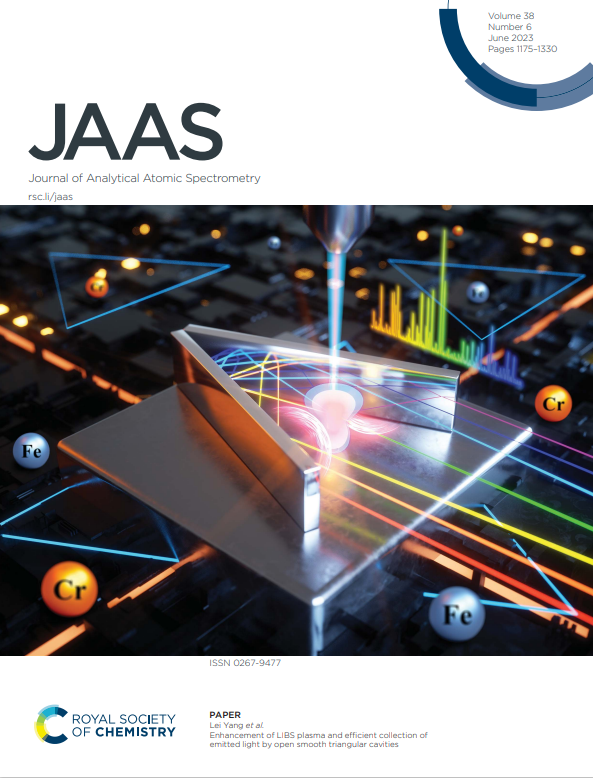
Fig. 1 The cover of JAAS issue 2023,38
To address the issues associated with current recyclable waste classification methods, such as low accuracy due to environmental influences, lack of automatic detection capability, and the inability to achieve subclassification, the research team used LIBS technology to achieve the rapid and accurate classification of recyclable waste. They integrated LIBS spectral drop-dimension methods with machine learning algorithms to establish multiple classification models. Considering the complexity of waste composition and the significance of accurate subclassification, they successfully achieved waste classification at the consumer level and further subclassification of metals and plastics at the recycling factory level. The research findings were published in AIP Advances (2023,13(7)). It was selected as a featured article to be prominently displayed on the website homepage. Furthermore, the research findings were reported by several reputable sources, including EurekAlert!, a science news network hosted by the American Association for the Advancement of Science (AAAS), Physics Today, a distinguished journal of the American Physical Society, Electro Optics, a prominent U.S. science magazine, Spectroscopy Magazine, and Nutshell Hard Tech-Future Light Cone.
EurekAlert! is an editorially independent, non-profit news distribution platform managed by the American Association for the Advancement of Science (AAAS). It provides the public access to cutting-edge research and significant science news from top research institutions and universities worldwide.

(a)
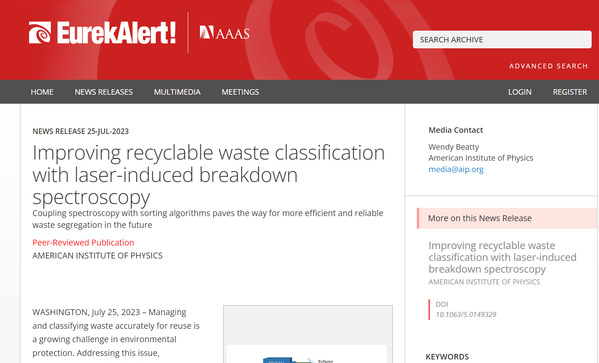
(b)
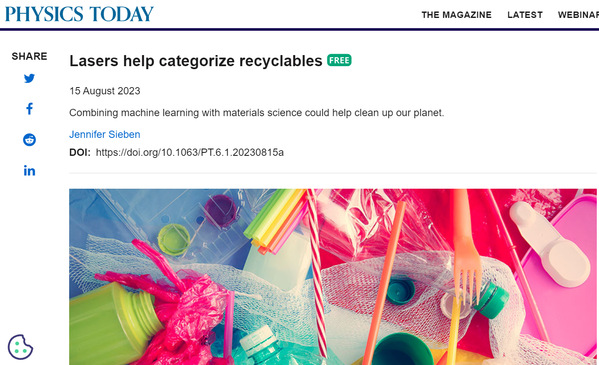
(c)

(d)
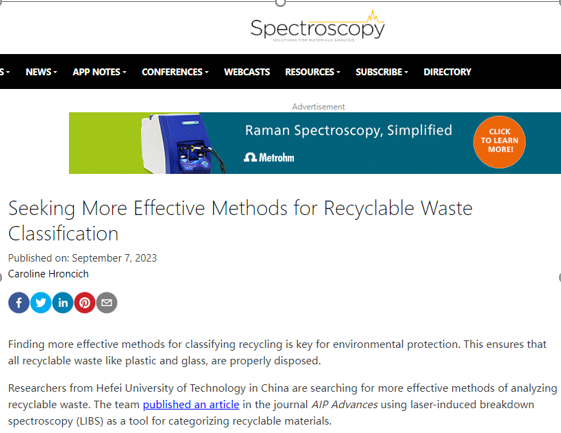
(e)
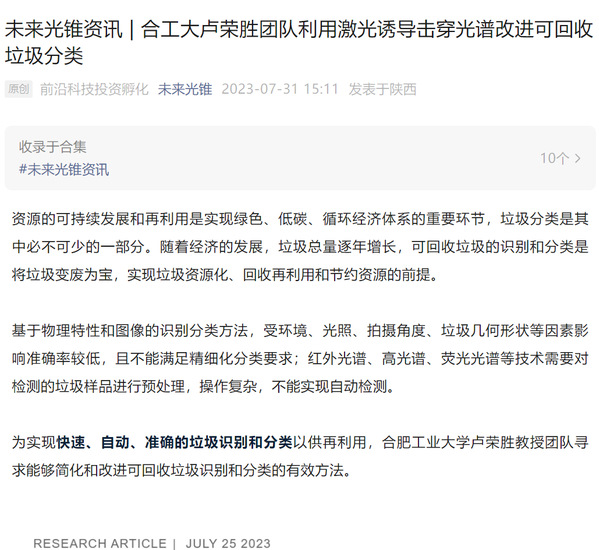
(f)
Fig. 2 Related reports including (a) the website homepage of AIP Advances 2023, Volume 13 issue, (b) the report from EurekAlert!, (c) the report from Physics Today, (d) the report from Electro Optics, (e) the report from Spectroscopy Magazine, and (f) the report from Future Light Cone.
Associate Professor Lei Yang, affiliated with the School of Instrumental Science and Opto-electronics Engineering, served as the first and corresponding author. Additionally, the related research received funding from the National Key Instrument Development Program.
Link to papers:
1. https://doi.org/10.1039/D3JA00050H
2. https://doi.org/10.1063/5.0149329
Related reports:
1. EurekAlert!: https://www.eurekalert.org/news-releases/996281
2. Physics Today: https://pubs.aip.org/physicstoday/online/42598/Lasers-help-categorize-recyclables?searchresult=1
3. Electro Optics: https://www.electrooptics.com/article/spectroscopy-enables-quick-accurate-waste-classification
4. Spectroscopy Magazine: https://www.spectroscopyonline.com/view/laser-induced-breakdown-spectroscopy-recyclable-waste-classification
5. Future Light Cone:https://mp.weixin.qq.com/s/9IYAmqv44uL-zSeZHWchsg
